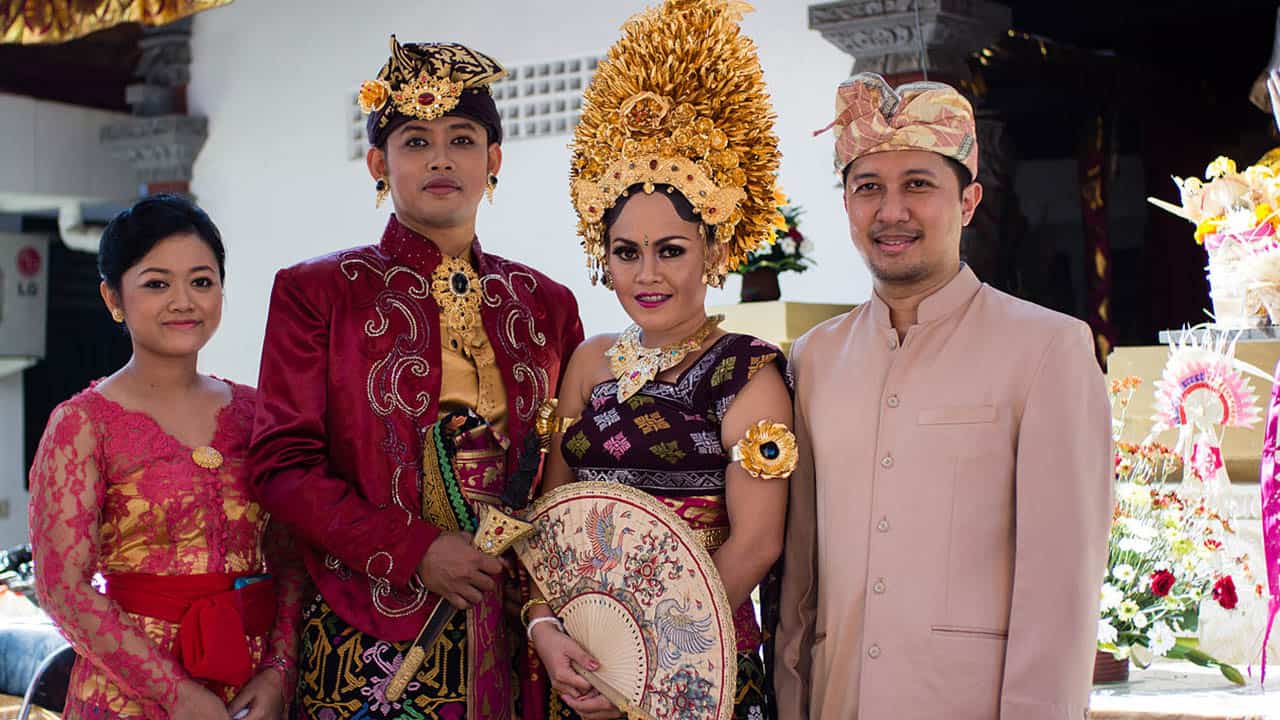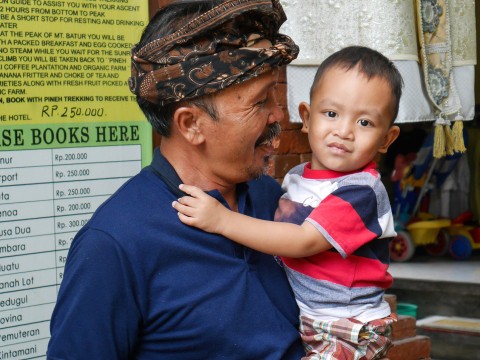The best event in the life of a Balinese is the day when a Balinese man finally weds the girl of his dreams. It’s a festive day; family and friends get together, the bride and groom are totally in love and are preparing a life together, and everything is so beautifully decorated. But, behind all the glamour of a Balinese wedding, there’s a lot of work involved before the big day.
Why is marriage an important part of Balinese life? To answer this question, we need to refer to the philosophies of Balinese life, which is conveniently classified into four stages known as the Catur Asrama. It starts with the Brahmacari phase, that period of life when people are still young and learning; then to the Grhasta, when people settle down and start families; Vanaprashta, when people retire and devote their time towards spiritual maturity; and finally, Sannyasin, when people retreat from the bustle of life and choose the life of the hermit. To be wed is to advance from being “young” to becoming a “family man”, which in Balinese culture means more responsibility as a member of the community. In Balinese culture, a married man automatically has to shoulder the responsibilities of being a good village member, such as paying dues and volunteering their time in preparing ceremonies. Additionally, it also means the added responsibility of being a leader of the family and raising children. A transition as big as that requires a formal celebration, and that’s where the wedding comes in!
Now, in Bali, a wedding is an exhausting process. There’s a lot to plan, from the formal religious ceremonies and the reception later on.
First of all, like many Balinese rituals, the man needs to find a dewasa ayu or a “good day” to get married according to the Balinese calendar. Usually, the man’s family consults a priest. After that, the man’s family discusses the plans with the woman’s family. Once the date is settled, then everyone has to prepare for the long list of sub-rituals that need to be done!
Usually, after settling the date (which can be months from now), the next process is the proposal. In Balinese, this is known as memadik. Both families of the parties will meet and compare family trees. This is to make sure that both parties do not share a blood relation. Remember, the Balinese love their extended families!
Now, after the proposal is done, both the groom and bride have their own duties to do. After the proposal, the bride needs to prepare herself to be “taken” by the man’s family. At the bride’s house, the bride gets a full-on treatment, just like at a spa. Her body is cleansed with herbal scrubs and washed. Once her body is cleansed, she undergoes a small ritual in front of a priest which spiritually prepares her for the transition from a young adult to a full-fledged adult. Once everything is done, the bride is forbidden to exit the house until the groom comes and picks her up. She is dressed in a thin yellow fabric which symbolizes her readiness to be “taken away” from her parents’ house and into the groom’s family. This entire process is known as ngekeb. It’s usually done prior to the proposal, so the groom can just “pick up” the bride after proposing immediately. In cases when this is not possible, the groom has to go to the bride’s house accompanied with the village officials and his parents to formally “take” the bride from her family.
Once the bride is at the groom’s house, the next round of rituals begin. The first is the mekala-kalaan, a ritual which defends the couple from disturbances by demons. The ritual also summons the spirits of nature to become witnesses of the newly-formed bond. Once the couple has been blessed by the Earth, they move on to the tegen-tegenan. It’s a symbolic ritual where the groom carries a makeshift basket attached to a bamboo pole, while the bride uses a garden broom to sweep the area in front of the groom as he walks. This represents the shared life that the two will embark on, so they must learn to work together.
Later on, the actual wedding begins. Called the majaya-jaya, the ceremony is overseen by a representative of the families, of the village, of a religious administrative body, and a high priest. The couple prays together (overseen by the high priest), and then sign marriage papers (overseen by the representatives). Once the papers are signed and the vows exchanged, the groom escorts the bride back to her house to inform the parents that the ceremony has been done. Additionally, the bride is also given a chance to pray at her family temple as a way to “inform” her ancestors that she will no longer be at home.
That’s the entire process of a Balinese wedding. It takes a lot of effort to make it work, but in the end, it’s all about the unification of two souls and the transition to a new stage of life. After the procession, of course there will be a reception. Generally, Indonesian wedding receptions are large and plentiful Everyone is welcome to eat and greet the newlyweds.. The adage “the more the merrier” applies here. Sometimes, receptions are so big, couples have to rent massive convention halls and hire catering services!




